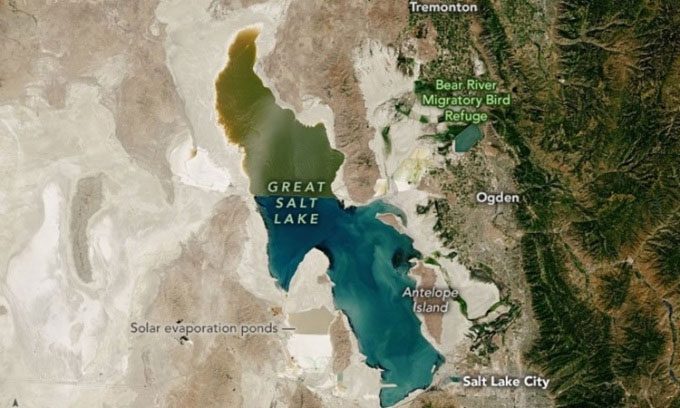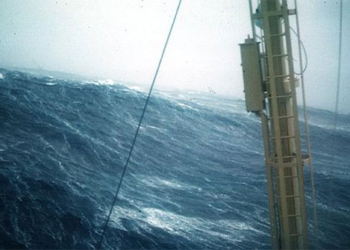Scientists are exploring the possibility of supplementing the Great Salt Lake with water from the Pacific Ocean through a 1,300 km pipeline.
The water level of the Great Salt Lake in Utah has been severely declining in recent years. In November 2022, the lake experienced its lowest recorded water level in history, measuring at 1,276.6 meters, which is 5.2 meters below the usual level. The low water levels are concerning for several reasons. The Great Salt Lake plays a crucial role in the health of the surrounding environment, serving as an essential habitat for migratory birds. Due to its large size, it also impacts climate and ecosystems. For this reason, scientists are seeking ways to save the Great Salt Lake.

The Great Salt Lake is the largest saline lake in the Western Hemisphere, covering an area of 4,400 km2. (Photo: Newsweek).
Utah has faced several years of severe drought, meaning the region is not receiving enough rainfall to replenish the lake quickly. One proposed solution to save the lake is to install a pipeline from the Pacific Ocean. The estimated construction cost for the pipeline ranges from $60 to $100 billion, according to state authorities. A new study published in the journal Environmental Research Communications points out that this idea comes with a host of significant challenges, Newsweek reported on November 17.
“There are many potential challenges when bringing water from the Pacific Ocean into the Great Salt Lake, such as construction, permitting, and salinity,” said Robert B. Sowby, an assistant professor at Brigham Young University and the lead researcher. “We analyzed the energy usage and emissions, particularly during operations, which have not been previously considered. Even in the best-case scenario, the numbers are still enormous.”
First, the project requires a substantial amount of electricity. Researchers found that pumping water into the lake would need 400 megawatts of power, equivalent to 11% of Utah’s annual electricity demand, with costs reaching up to $300 million per year. The research team also estimates that this amount of electricity would emit approximately one million tons of carbon dioxide annually. They are concerned that this figure could triple when considering the surrounding terrain and the management of the pipeline.
The Great Salt Lake receives water from runoff in the Uinta and Wasatch ranges. This means that low rainfall could severely hinder the lake’s water supply. The southwestern United States experienced significant rainfall over the past year, with snow accumulation in the mountains reaching record levels. However, experts fear that the effects of winter may only be short-term. Experts are still monitoring how the Great Salt Lake will change if the region experiences extremely dry weather in the coming years.





















































